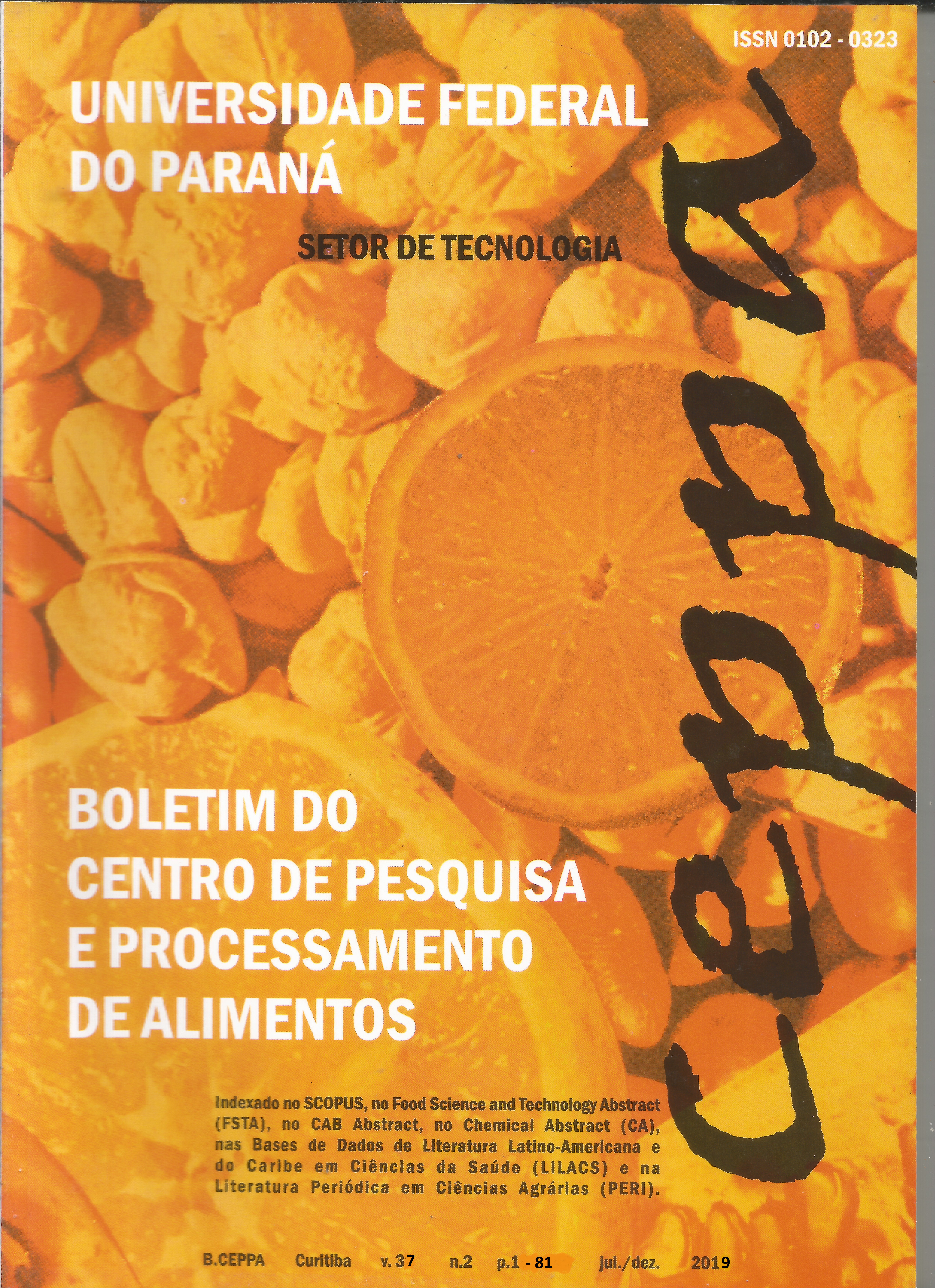EFFECTS OF TEMPERATURE IN DEGRADATION KINETICS OF ANTHOCYANIN FROM JAMUN FRUIT (Eugenia jambolana) USING THE ARRHENIUS, EYRING AND BALL MODELS
DOI:
https://doi.org/10.5380/bceppa.v37i2.65323Palavras-chave:
THERMODYNAMIC, CYANIDIN, ENTHALPY, NATURAL PIGMENTResumo
Anthocyanins are flavonoids found in fruits and vegetables, ranging from red to violet and blue, which are shown to be a potential substitute for artificial colors, especially in food. Due to its thermal instability, this work had as objective to establish the kinetic and thermodynamic parameters that describe the thermal degradation of the anthocyanins from jamun fruit between 50 and 80 ° C using the Arrhenius, Eyring and Ball models. The thermal degradation process of the anthocyanins followed a model of first-order kinetics and the three models correlated the temperature to the degradative process coefficients of determination between 0.939 and 0.960. The activation energy was 93.383 kJ mol-1 and, thermodynamically, the values of ΔH, ΔS and ΔG did not differ when using the Arrhenius or Eyring approaches, allowing, according to both, to characterize the degradation reaction as endothermic, non-spontaneous and with the transition state with less structural freedom than the regents. According to the Ball model, the temperature range z was 27.03°C.
Downloads
Publicado
Como Citar
Edição
Seção
Licença
Copyright for articles published in this magazine belongs to the author, with first publication rights for the magazine. By virtue of appearing in this public access magazine, the articles are free to use, with their own attributions, in educational and non-commercial applications.


